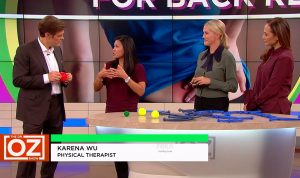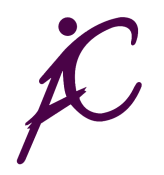 ActiveCare Physical Therapy, PC
ActiveCare Physical Therapy, PC
29 West 38th Street
Suite 601
New York, NY 10018

Shed No Tears for Shoulder Labral Tears
Here’s something no one wants to hear: the words “labral tear.” As a physical therapist, I see it all the time. A common ailment in baseball pitchers, tennis players, and volleyball players, a labral tear is when the cartilage that protects and stabilizes the relatively shallow and delicate shoulder joint rips. It happens a lot in sports where there is repeated overhead motion. There might be a clicking noise in the shoulder area, or just a weird off feeling. And sometimes it hurts. A lot.
Luckily, people can live with labral tears. But not all, and they are tricky to figure out. I love this fascinating article about the effect of labral tears in baseball from Slate. I can recommend one thing- physical therapy is majorly helpful in strengthening up the area around the shoulder, and getting the core involved to share the burden. Here are a few easy exercises, along with my usual caveat: if you are in treatment please speak to your doctor or physical therapist before trying these at home!
Shoulder External Rotation- Below is a great video that clearly and cleanly explains external shoulder rotation exercises, one of the easiest and most basic therapies for that pesky labral tear. It’ll also really help strengthen your shoulders, and perhaps prevent the tear from happening at all.
Shoulder External Rotation
Shoulder Extension- I know they don’t look like much, especially with all the fun we had last time with the Cadillac, but these simple shoulder extension exercises with light weights really do a great job strengthening the delicate shoulder joint and cuff. Live Strong has a few really easy ones you can find here.
Empty Cans- I swear you will not look crazy when you do this. And won’t it be worth it when your shoulder feels that much better? You are also engaging your whole core, so the benefits far outweigh looking like a bird. Also- points for ease of use. All you have to do is, starting with your arms down by your sides, very slowly and thoughtfully rotate the arms inward (turn your hand in so your thumb is pointing behind you). Bring your arms up at a 20 degree angle at your sides (some texts say 45 degrees, but the supraspinatus rotator cuff muscle that you are working only work the first 20 degrees). Feel your stomach pulled into your back, and make sure to use your shoulders- and NOT your elbows- to raise those arms. It’s one of those great exercises that looks easier then it actually is. As to why it’s called “empty cans”… well, it’s very clever actually- when you turn your hands, they should mimic the motion of emptying of a can. Check out this diagram to get a great idea of what I mean.
